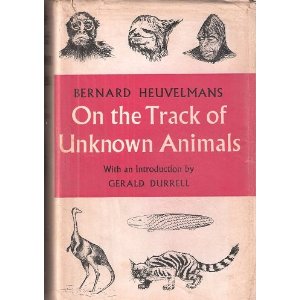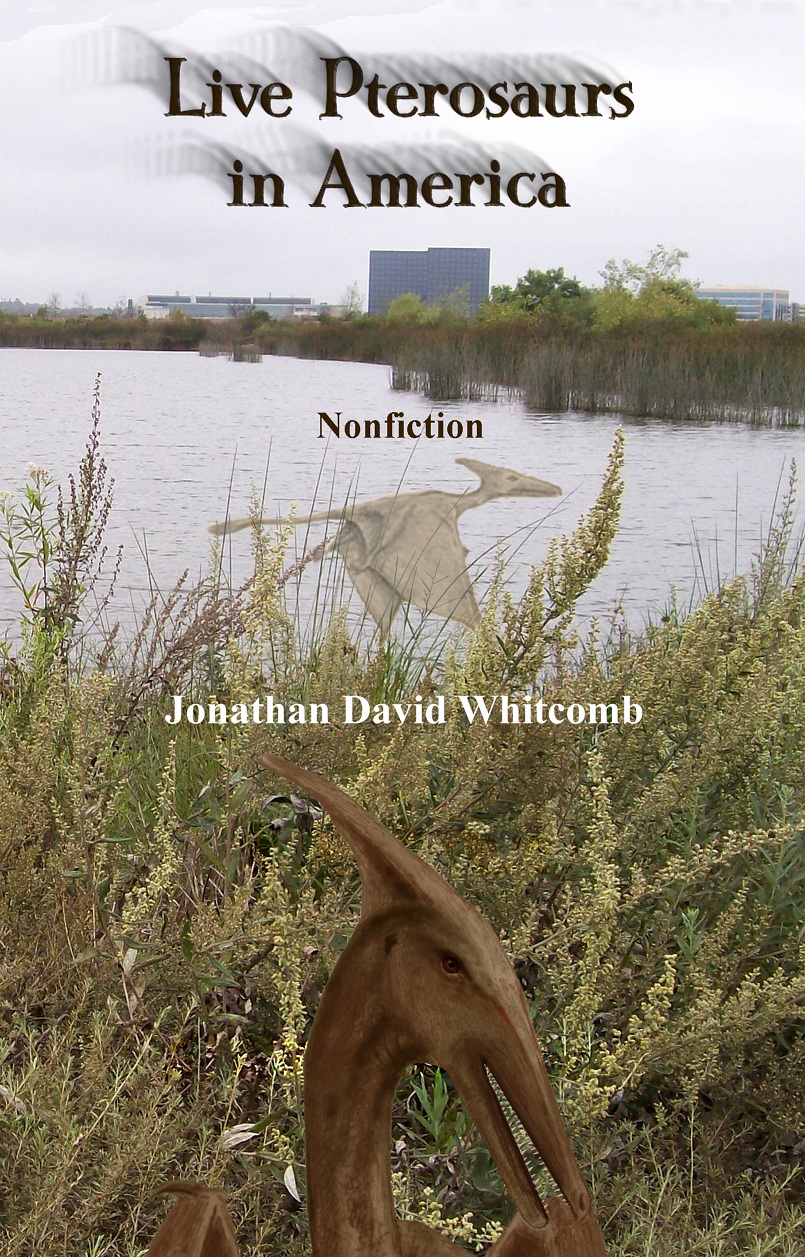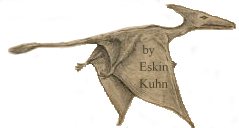I’m sure I’ve read this book at least once, in my youth long ago. On the Track of Unknown Animals, by Bernard Heuvelmans, is now considered a classic in cryptozoology, originally in French but often encountered in its 1958 or 1959 English edition with its 120 sketches, a well-crafted assortment of strange creatures and a few monsters. Yesterday I found a library copy and took notes on sightings of apparent pterosaurs. This classic now deserves quoting, again.

Chapter twenty-one, “Kongamato, the Last Flying Dragon,” begins by quoting Charles Kingsley (The Water-Babies): “People call them pterodactyls; but that is only because they are ashamed to call them flying dragons, after denying so long that flying dragons could exist.” On page 485 the author digs into the meat of a live pterosaur in Africa.
In 1923 Frank H. Melland published an account of his travels entitled In Witchbound Africa . . . [It included] rather vague rumours about a much-feared animal called “kongamato,” said to live in the Jiundu swamps in the north-west corner of No. Rhodesia near the frontier of the Bengian Congo and Angola. . . . The natives told him that it was a bird, but not exactly a bird, more like a lizard with wings of skin like a bat’s . . . the beast’s wingspan was between four and seven feet . . . it had no feathers at all . . . [with skin] bare and smooth, and its beak was full of teeth. . . . he showed the natives pictures . . . They immediately [pointed out] the Pterodactyl, excitedly muttering “kongamato!”
Amazon gives two prices for this out-of-print cryptozoology book, On the Track of Unknown Animals: $135.00 and $339.66, revealing its collectible status.
Kongamato or Pterodactyl of Africa
The kongamato is sometimes compared with the ropen of Papua New Guinea or the long-tailed pterosaur seen in Eastern Cuba in the mid-20th century. This kind of cryptid has been reported in many parts of the world, including North America, Australia, Europe, and Africa.
Kongamato Crossing the Atlantic?
One species of crane flies over the Himalayan Mountains regularly, sometimes at an altitude of 30,000 feet. Large nocturnal pterosaurs, under the right wind conditions, could cross the Atlantic, from Africa. As more sighting reports come in from Africa and North America, we need to look at the possibility that some of the flying creatures on different sides of the Atlantic may be closely related or even the same species.
Books About Live Pterosaurs in North America
It seems we now have three nonfiction books about extant pterosaurs in North America . . . These paperback books are Big Bird (by Ken Gerhard), Live Pterosaurs in America (by Jonathan Whitcomb, third edition), and Bird From Hell (by Gerald McIsaac, second edition).
Books on extant pterosaurs are not so rare as they were when On the Track of Unknown Animals was first published.
*****************************************************************
Ad

Get the details lacking on the online blog posts and web pages. Buy Live Pterosaurs in America, third edition, by the nonfiction author who interviews eyewitnesses from around the world, the live-pterosaur expert Jonathan David Whitcomb. Get the facts, eyewitness accounts from many U.S. states: California, New Mexico, Texas, Arkansas, Oklahoma, Georgia, Florida, South Carolina, Pennsylvania, Kentucky, Virginia, Kansas, Indiana, Ohio, Wisconsin, Michigan, Missouri, Kansas, New York, and other states.
From a review of the second edition of this cryptozoology book, on Amazon, by “stevie” (the third edition is slightly expanded, even better than the second edition):
“This is an updated review of the book and I am changing my rating to 5 stars. This book has been on my shelf for almost a year now. I pick it up every now and then and a part of me becomes more impressed by the book every time. . . .
“Whitcomb painstakingly reviews every account for credibility and reason. This man is not a crank. He tries to weed out would be hoaxes and miss-identification. This is not a guy looking to create evidence to confirm his own beliefs. On top of this, I have great respect for a guy who follows his dreams so passionately. He has traveled to Papua New Guinea to search for the creature there and this book is somewhat of a sequel . . .
“I do believe the author tried hard to deliver these stories and was very good at it. This is well written and very hard to put down.”



